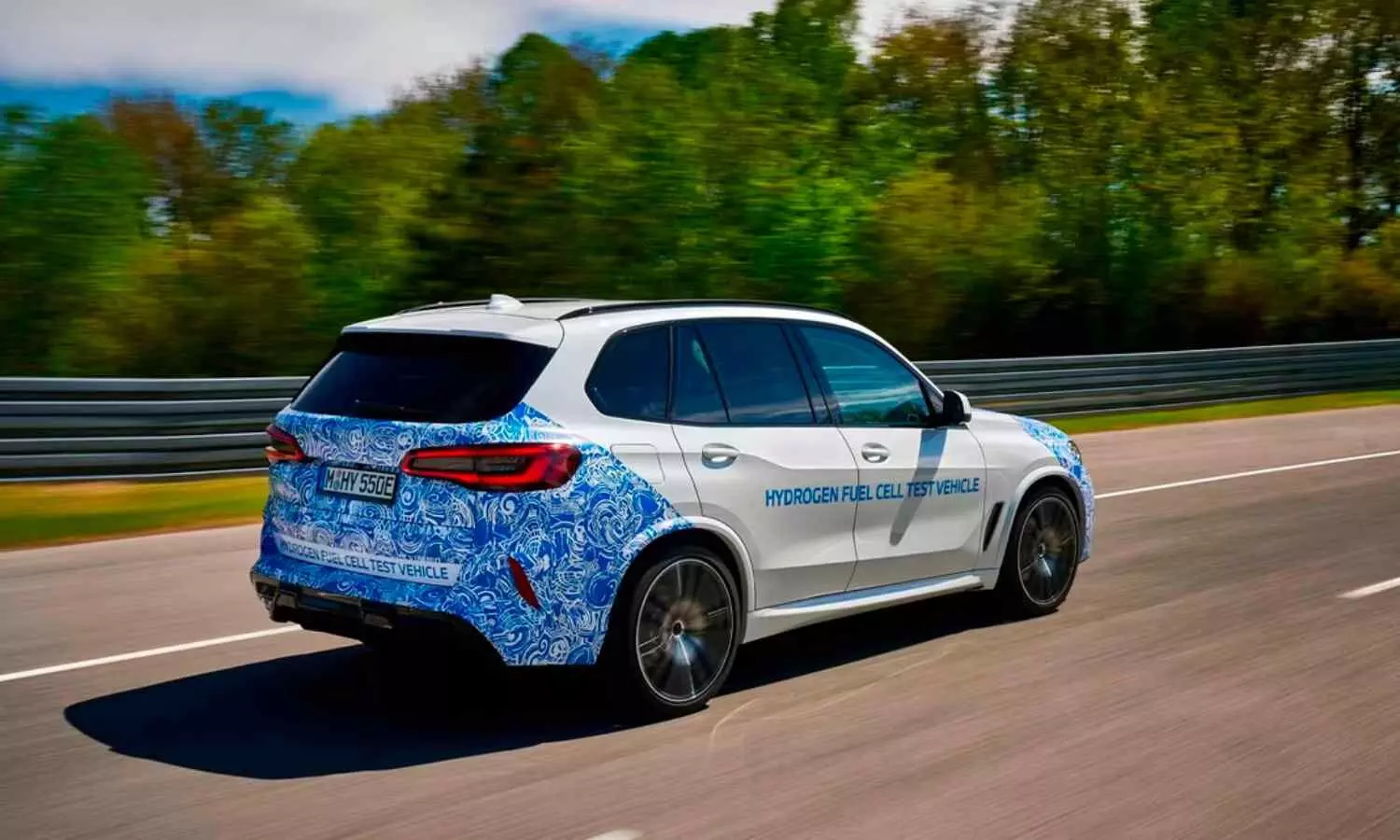Live
- Ahead of Trump’s inauguration, debate on H1B visas intensifies
- Cabinet to brainstorm on energy policy today
- CM calls for developing NextGen airports
- MyVoice: Views of our readers 4th January 2025
- Andhra Pradesh Leads in Sankranti Movies Ticket Price Hikes, Telangana's Decision Awaited
- Stop hindu bashing & be alive to real issues
- Why workers have voted for Trump
- Centre must appear keen to hear out farmers
- CM Revanth Reddy Stresses Social Transformation in Telangana, Promises Quick Resolution to Employees' Issues
- Tripura Ranji Team Meets Governor Jishnu Dev Varma at Hyderabad Raj Bhavan
Just In
Hydrogen-Powered Cars: Is It a Bright Future or Just a Dream?


Hydrogen-Powered Cars: Is It a Bright Future or Just a Dream?
Let’s figure out how big the future of hydrogen-powered cars in India is. Explore how hydrogen cars are the next big thing for Indians.
India is aiming high with a bold climate goal: net-zero emissions by 2070. Despite the grandiosity of the task, they're showing serious commitment, attracting major funding to renewable energy. One area making big strides toward net zero is Indian transport. It's a big issue because transport makes up a whopping 14% of energy-related emissions in India, says a City Fix report.
Zooming out from just climate and the environment, hydrogen fuel cell vehicles have advantages that make them great for personal drivers, businesses, and various ZEV forms. Given the size of environmental issues worldwide, we should consider every effort to boost sustainable transportation.
Batteries and hydrogen fuel cells can both deliver top-notch performance. There's a development difference, though: the EV market is growing, while hydrogen is still catching up. India aims to hit 30% electric vehicle usage by 2030.
As electric mobility gains steam, it's critical that we keep our eyes on Net Zero goals along every step of the chain. Right now, India's heavy on carbon-intensive electricity, with coal power chipping in about 72% of the supply. Increasing renewable electricity is key—solar, wind, hydro, and geothermal.
India's seriously working on it, with the world's fastest-growing renewable energy capacity, says a government study. Despite all this hard work, there are issues with the logistics of powering transportation from renewable sources. This poses a real challenge for hitting a net-zero emissions target using electric power. Can hydrogen offer an answer to this mobility conundrum? That's a question being asked worldwide.
A Look into Hydrogen-Powered Car technology
A fuel cell, to put it simply, is an electrochemical engine. It turns the chemical energy from fuel and oxidant straight into electricity. When it comes to eco-friendly hydrogen cars, hydrogen is the primary fuel, though oxygen is still necessary. These fuel cells generate electricity using a chemical reaction.
Each one has a negative electrode, or anode, and a positive one, called the cathode. These are split by an electrolyte, which keeps the cell's reactants from mixing and manages the movement of charged particles created during the reaction.
Is Hydrogen Production Raising Carbon Emissions?
Today, industrial hydrogen, which makes up about half of the global total, primarily comes from natural gas, or methane. This is often used in fertilizers and the iron, steel, and space industries. But the common method of steam methane reforming, or SMR, which extracts hydrogen from natural gas, also produces about 10 tons of CO2 for every ton of hydrogen. There's an alternative way of producing hydrogen too: electrolysis.
This technique breaks water molecules into hydrogen and oxygen with an electric current. Renewable energy, like wind or solar power, can provide the necessary electricity. The result is "green" hydrogen, and there are zero carbon emissions. However, electrolysis costs more than SMR and needs a lot of electricity.
Hydrogen Transportation: A Challenge for India
Despite having benefits, hydrogen cars have many challenges. Moving hydrogen isn't easy In India; we're barely starting to move hydrogen for fuel cell cars. Yet, there's hope. Both the government and businesses are putting money into hydrogen tech. They're working on making more, storing it better, and moving it safely. This could help fuel cell cars go further and be more useful.
You can move hydrogen as a gas, squeezing it into pipelines or big pressure tanks. Sending hydrogen through pipelines needs a special set-up and mighty compressors. But, in India, it's not happening a lot yet. Instead, using trucks with big tanks is more usual. We're still figuring it out, but it's quite popular worldwide. Moving hydrogen this way needs special gear and steps to stay safe.
Servicing a Hydrogen Car
The biggest difference between hydrogen fuel cells and electric cars is here. Like electric cars, there are extra care measures for hydrogen cars at service centers. Hydrogen Fuel Cell Vehicles (HFCVs) have the same high-energy battery packs seen in hybrids, plug-ins, or electric cars. Yet, they hold something else. They have one or more protected carbon-fiber tanks that keep pure, highly pressurized hydrogen: a whopping 10,000 pounds per square inch (psi), or 700 bars in metric standards.
Conclusion
Hydrogen mobility might seem wildly pricey, and it's still quite new. It's hard to see how the future automotive trends of hydrogen cars will grow, even when making educated guesses. Because of this, it's hard to say if hydrogen or electric is better for making things greener. Yet a Quantron paper suggests that both electric and hydrogen mobility might work well together down the line. For instance, if things are light and don't need to travel far, electric mobility could be the go-to. However, if we're talking heavy-duty transport over long distances, hydrogen mobility might win out. This is because it covers more distances and doesn't need refueling as often as electric mobility.

© 2024 Hyderabad Media House Limited/The Hans India. All rights reserved. Powered by hocalwire.com






